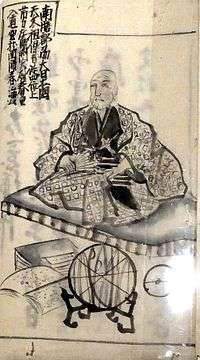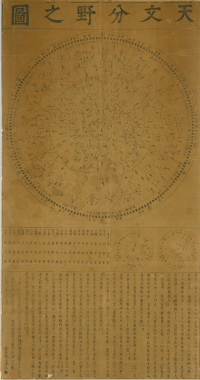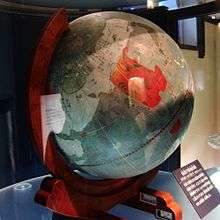Shibukawa Shunkai
Shibukawa Shunkai (渋川 春海, December 27, 1639 – November 1, 1715), also known as Shibukawa Harumi, Yasui Santetsu II 二世保井算哲, and Motoi Santetsu 保井 算晢, was a Japanese scholar, go player and the first official astronomer appointed of the Edo period. He revised the Chinese lunisolar calendar at the shogunate request, drawing up the Jōkyō calendar which was issued in 1684 during the Jōkyō era. In 1702, he changed his name to Shibukawa Sukezaemon Shunkai and retired by 1711. As a go player, he was affiliated with the Yasui house, calling himself initially (after his father) Yasui Santetsu II. He is mentioned as a Tengen player in Yamashita Keigo 's book: Challenging Tengen.[2]




Shibukawa Shunkai (as Yasui Santetsu) is the central character in the 2012 film Tenchi: The Samurai Astronomer by Yōjirō Takita.[3]
Notes
- Papier-mache terrestrial globe – National Museum of Nature and Science
- (天元への挑戦), Published by Kawade in 2000, ISBN 978-4309264455.
- Schilling, Mark (September 14, 2012). "Tenchi Meisatsu (Tenchi: The Samurai Astronomer)". The Japan Times.
| Wikimedia Commons has media related to Shibukawa Shunkai. |